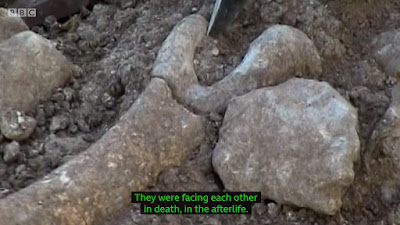11:00 My big triumph this morning is to assemble a garden hose reel that we can use to wind our garden hose round when we put it to bed for the winter. It’s all plastic and aluminium, so it won’t rust if left out in the rain, which is good. It’s supposed to be “self-assembly” without tools, but I find the little plastic pins need the help of a hammer to go in – I was half-expecting this. I’ve come across the boast “no tools needed” before, no doubt about that!
I gloat over my newly assembled garden hose reel before enjoying a well-earned cup of coffee
12:30 Lois and I have lunch, and afterwards I have another discussion with my doctor about my ongoing pain-in-the-joints issues. I talked to him last week, because I said I thought the statins which I have just started taking have contributed to the joints problem. Today I have to report to him unfortunately that giving up the statins for a week hasn’t made any difference – damn! He recommends me to take paracetamol instead of ibuprofen, and urges me to sign up to some physiotherapy. Well we’ll see.
I have been foiled once again in my dream of being told by a doctor that “You simply must get a couple of weeks of just resting and taking it easy”, a dream that was passed on to me long ago by my late father-in-law. It seems I am doomed never to hear that message - oh dear!
18:30 Dinner - the marrow given us by our friend, Mari-Ann, together with minced beef and baked potato with butter - yum yum!
21:15 We watch a bit of TV, the second part in a series on cats: “Cat Tales: in from the Wild”.
UK residences are homes to 10 million pet cats, apparently, which
seems a lot, but pales in comparison to the US, where there are 58 million.
An interesting programme, that starts with brain studies that shows that virtually all humans respond instantly to just two noises: a baby crying and a cat miaowing. Humans try, but fail, to “read” cat’s facial expressions, but they read us much better – cats are much more likely to approach somebody with a smiley face than one with a scowl.
Genetic studies show that the world’s domestic cats are not descended from the big, confident cats like lions and tigers. They are a development of wildcats, which have always had a slightly more timid strain to their characters – they will hide, for instance, for tactical reasons, if necessary.
There were half a dozen or so wildcat varieties in prehistoric times, but today’s domestic cats all descend from the North African wildcat – and they split from these wildcats about 10,000 years ago. This was also a time when the agricultural revolution was taking place in the Middle East. Nomadic life was being phased out, and grain was being cultivated and stored by the earliest farmers. The grain attracted rodents, and cats soon realised there were now places with a plentiful supply of small animals for them to prey on, and this also suited the farmers. Simples!
Cats probably started becoming pets around this time or soon after. A 9500-year-old grave has been found on Cyprus, containing a human skeleton and the skeleton of a cat. It's thought that domestic cats were brought to Cyprus by boat - there have never been any traces of native wildcats found on Cyprus.
Domestic cats have evolved and have differentiated themselves from wildcats – as well as eating protein foods, they eat some plant material as well, scraps of grains and vegetables. They have longer intestines as a result, and their behavioural genes have modified as well, making them more friendly to people, and “bolder” in their presence. And they only miaow when people are around. “Cats domesticated themselves” apparently.
The ancient Egyptians valued cats for their ability to control rodents, and also snakes, and they were worshipped as incarnations of the goddess Bastet. It was the Egyptians who started taking cats on trading boats to keep down the rodents, and in this way – trading vessels – first the Egyptians, later the Romans, and still later the Vikings, facilitated the spread of the domestic cat all over the known world. Both the Egyptians and the Vikings particularly liked ginger cats, and so tended to breed them. Ginger cats were oddities to begin with: wildcats are almost always of the tabby kind, which is a better camouflage in the wild.
The cosy relationship between domestic cats and humans started going downhill in medieval times, thanks to Pope Gregory IX, who declared that all cats were “in league with Satan”. Their eyes, big and wide for night vision and hunting, started to seem creepy and menacing. Also cat allergies made people think that cars had some evil power to cause suffering – cat allergies affect 1 in 10 humans, apparently. But what madness!
This crazy phase began to come to an end at the time of the Protestant Reformation – people started to value cats again, as protectors of households against rats, and also against evil spirits. Some cats were buried inside the walls of houses, because it was thought their protective powers continued after their death – yikes!
21:45 A fascinating programme, which makes Lois and me wish we still had a cat ourselves. But suddenly I turn to Lois on the sofa and I see that she has fallen asleep, so I stop the tape - we’ll see the rest of the programme another evening. We go to bed – zzzzzzzz!!!!!












No comments:
Post a Comment